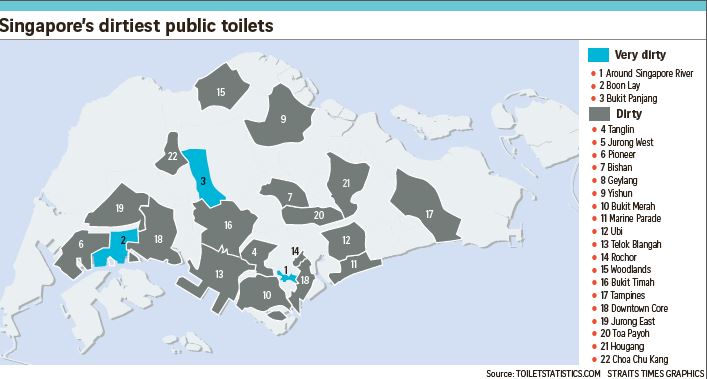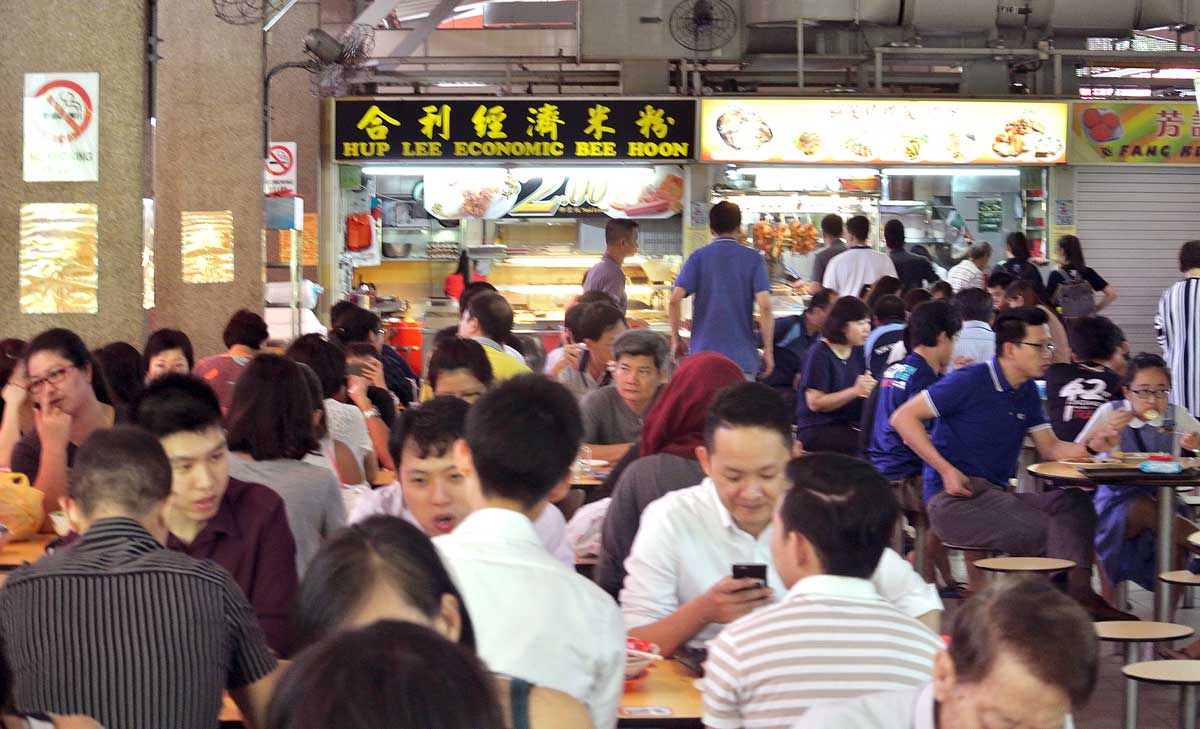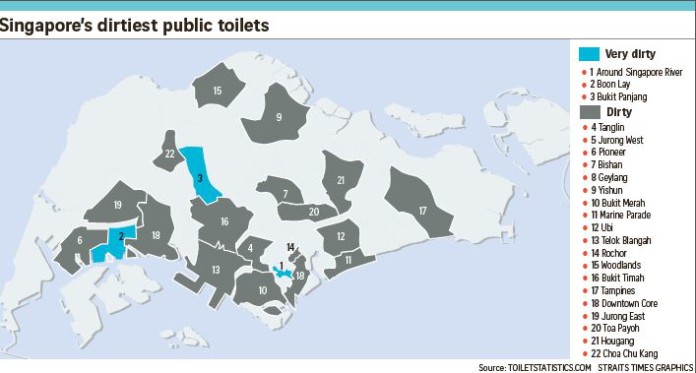The dirtiest hawker centre and coffee shop toilets are in the neighbourhood of the Singapore River, and in Boon Lay and Bukit Panjang, a recent survey has found.
The cleanest public toilets in hawker centres and coffee shops are those in the Marina South and Western Water Catchment areas.
The comprehensive survey of toilets in all 109 hawker centres and four in five coffee shops across the island was carried out by 178 Singapore Management University (SMU) students over five weeks from August this year, as part of their introductory statistics course.
It was done with the World Toilet Organisation.
SMU senior statistics lecturer Rosie Ching, who teaches the course, said: “Hopefully, the study will get communities to be more aware of the cleanliness of the coffee shops and hawker centres in their regions, and to keep them clean.”
More than 60 per cent of people polled last year said they would not visit an eatery if its toilets were rated the dirtiest, even if its food was good. People have, over the years, expressed disgust at the state of some of Singapore’s public toilets.
Back in 2011, a survey of 500 Singapore citizens and permanent residents showed 27 per cent of them were “unhappy” or “very unhappy” with the cleanliness of the toilets.

Ms Ching said the data collected was used to produce a Toilet Cleanliness Index for public toilets in hawker centres and coffee shops.
It took into account variables like the cleanliness of toilet features in and outside the cubicles such as sinks, floors, mirrors, the toilet design, and the distance between the toilets and the cooking facilities.
World Toilet Organisation founder Jack Sim said the survey is aimed at pushing residents to do more to maintain Singapore’s reputation as one of the cleanest cities in the world. He hopes the index would be used again in two years to track whether there were improvements.
Students involved in the study were initially apprehensive about doing it, said third-year business student Michael Nai. “A lot of them were very shocked, not just at the amount of work they had to do but the type of work they had to do. But over time, we found it quite fun.”
Added the 23-year-old: “It was an eye-opening experience. It made statistics and learning real.
“It also helps you appreciate what our cleaners do.”
calyang@sph.com.sg

This article was first published on November 15, 2016.
Get a copy of The Straits Times or go to straitstimes.com for more stories.







